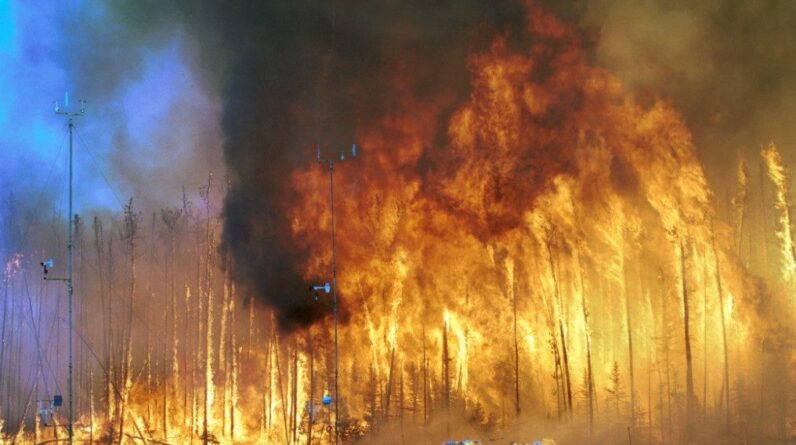
[ad_1]
Wildfire in the Northwest Territories, Canada.
Photograph used by permission of the USDA Forest Service (CC BY 2.5)
Canada could potentially see increased wildfire activity for the rest of the year, said federal officials in a media teleconference on Thursday.
According to numbers released by Natural Resources Canada on Thursday, as of Sept. 6, there are 1,052 wildfires raging across Canada, with 791 designated as out-of-control. This year, there have been 6,174 fires throughout the country, two of which have exceeded one million hectares, reports CTV News Canada.
Canada is enduring its worst wildfire season on record, with over 166,000 square kilometers (64,000 square miles), or an area equivalent to four Switzerlands, of land already burned.
Warm and dry conditions in September could ignite additional wildfires, and there is a possibility that some of the blazes could remain active through the winter season, Natural Resources Minister Jonathan Wilkinson said on Thursday, Reuters is reporting.
Nearly all 13 Canadian provinces and territories have experienced wildfires this year, forcing home evacuations, disrupting energy production, and drawing in federal, as well as international firefighting resources.
Wilkinson pointed out in the teleconference that even though wildfires in Canada are not uncommon, climate change was amplifying their frequency and intensity. “The science is clear: The root cause of this is climate change,” Wilkinson said.
Wilkinson also announced new funding for B.C. and N.W.T. to fight wildfires. “In the last few days we have finalized agreements with both British Columbia and with Northwest Territories, through which B.C. will receive $32 million and over $28 million will be provided to Northwest Territories over the next five years. This federal funding will be supplemented by provincial and territorial contributions,” he said.
Forecast maps from Natural Resources Canada were shared with reporters on Thursday, Global News is reporting, and the maps show Manitoba is likely to see the most intense fire activity in September, with Saskatchewan, Eastern Alberta, and Western Ontario also likely to see “above-average” fire activity.
Wilkinson also said Natural Resources Canada is making $256 million available over five years to provinces and territories to procure lifesaving wildland firefighting equipment and essential personnel.
“To date, Alberta. British Columbia. Nova Scotia. Saskatchewan, Northwest Territories, and Yukon have access to this fund this year, and we expect all jurisdictions to participate next year.”
Wildfires have left behind some disheartening statistics, including an estimated 1.7 billion tonnes of CO2 emitted so far this year. The cost of fighting the wildfires has also been immense. Natural Resources Canada said the biggest area of cost is the effort that goes into fire suppression, which is going to be “significant” this year according to experts.
B.C., Alberta, N.W.T, and Saskatchewan are the only jurisdictions that have shared the cost of fire suppression in the year so far. The cost of fire suppression in these four jurisdictions amounts to around $1.4 billion.
[ad_2]
Source link






